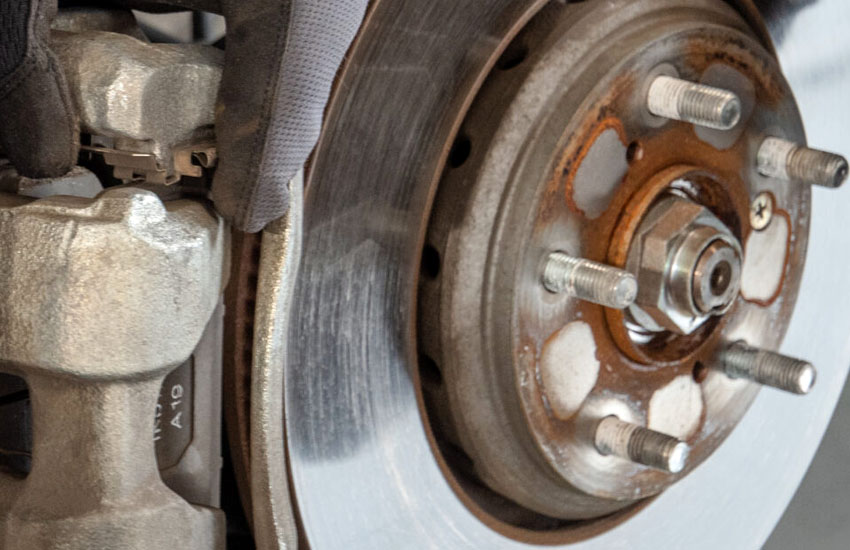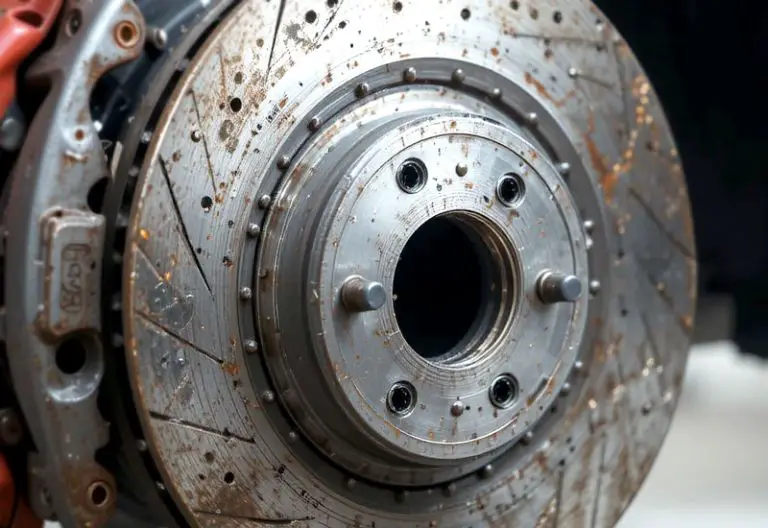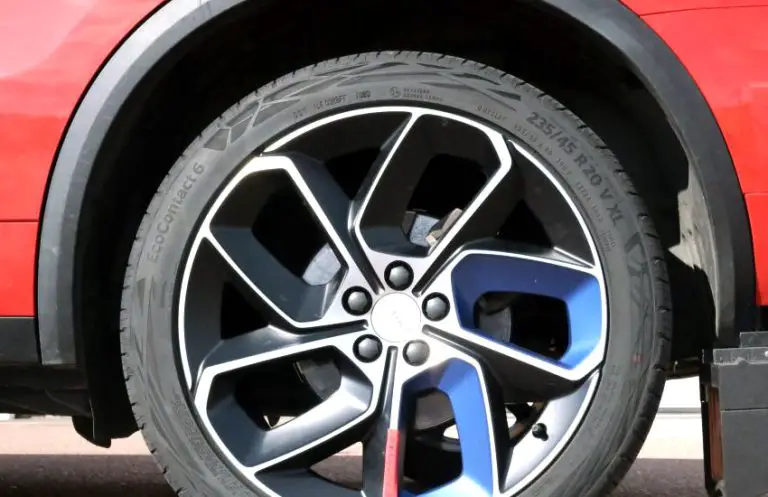When it comes to the performance and safety of your vehicle, few components are as critical as the brake system. The brake caliper, in particular, plays a pivotal role in ensuring your vehicle can stop efficiently and safely. But does the positioning of brake calipers matter? In this blog post, we’ll explore the importance of brake caliper positioning, how it affects vehicle performance, and what you need to know to make informed decisions about your vehicle’s braking system.

The Basics of Brake Calipers
Brake calipers are a crucial part of a vehicle’s braking system. They house the brake pads and pistons and are responsible for applying pressure to the brake pads, which in turn clamp down on the brake rotors to slow or stop the vehicle. Most modern vehicles use disc brakes, and the caliper is an integral part of this setup. There are two main types of brake calipers: floating (or sliding) calipers and fixed calipers.
Types of Brake Calipers
- Floating Calipers: These calipers have a piston on only one side of the disc, and they move in and out as pressure is applied. The brake pad on the opposite side is held in place by a bracket. This design is more common and generally more cost-effective.
- Fixed Calipers: These calipers have pistons on both sides of the disc. They do not move but rather apply pressure from both sides simultaneously. Fixed calipers are often found on high-performance vehicles because they provide better braking performance and are more rigid.
How Brake Calipers Work
When you press the brake pedal, brake fluid is sent through the brake lines into the caliper. The fluid pressure forces the pistons within the caliper to push the brake pads against the rotor. The friction between the pads and the rotor slows down the wheel, thus decelerating the vehicle.
The Role of Caliper Positioning
Caliper positioning refers to the location of the brake caliper in relation to the brake rotor. The caliper can be positioned in various locations around the rotor: front, rear, top, or bottom. While it might seem like a minor detail, the positioning of the brake caliper can have significant effects on braking performance, heat dissipation, and even the vehicle’s handling characteristics.
How Caliper Positioning Affects Performance
Heat Dissipation and Caliper Efficiency
One of the primary concerns with brake caliper positioning is heat dissipation. Braking generates a lot of heat due to the friction between the brake pads and the rotor. If this heat is not effectively managed, it can lead to brake fade, where the brakes become less effective, and even cause damage to the braking components.
- Top and Bottom Positioning: When calipers are positioned at the top or bottom of the rotor, they can benefit from better airflow, which helps in cooling the brakes. Airflow can help dissipate the heat generated during braking, reducing the risk of brake fade. However, the exact benefits can vary based on the vehicle design and driving conditions.
- Front and Rear Positioning: Positioning the calipers at the front or rear of the rotor may not provide as much natural cooling from airflow. However, this positioning can have other benefits, such as improved weight distribution and packaging within the wheel well. In some cases, rear positioning can also help with better balance during braking, especially in performance cars where precise handling is crucial.
Vehicle Handling and Balance
The positioning of the brake calipers can also affect the handling and balance of the vehicle. In high-performance and race cars, where every detail can impact lap times and handling characteristics, caliper positioning is carefully considered.
- Weight Distribution: By strategically positioning the brake calipers, engineers can influence the weight distribution of the vehicle. For instance, placing the calipers at the rear of the rotor can help move some weight toward the rear of the car, which can be beneficial for rear-wheel-drive vehicles. Conversely, positioning them at the front can shift weight toward the front, which might be advantageous for front-wheel-drive vehicles.
- Unsprung Weight: Unsprung weight refers to the mass of the components that are not supported by the suspension, such as the wheels, tires, and brakes. Reducing unsprung weight can improve the vehicle’s handling and ride quality. The position of the brake calipers can impact unsprung weight distribution. Calipers mounted at the top or bottom can sometimes contribute to a more balanced distribution of unsprung weight.
Maintenance and Accessibility
The ease of maintenance and accessibility of brake calipers is another important consideration. Calipers that are easier to access can simplify brake pad replacements and other maintenance tasks, potentially reducing labor costs and downtime.
- Front and Rear Positioning: Calipers positioned at the front or rear of the rotor can be easier to access, especially when the vehicle is on a lift. This positioning can make it simpler for mechanics to perform routine maintenance and inspections.
- Top and Bottom Positioning: Calipers located at the top or bottom of the rotor might be less accessible, depending on the vehicle’s design. While this positioning can offer benefits in terms of cooling and performance, it might complicate maintenance procedures.
The Practical Implications for Everyday Drivers
Everyday Driving Scenarios
For the average driver, the positioning of the brake calipers might not be something they think about often. However, understanding its implications can help in making informed decisions, especially when it comes to maintenance and performance upgrades.
- City Driving: In stop-and-go traffic, brake performance and reliability are crucial. Calipers that are well-positioned for cooling can help ensure consistent braking performance, reducing the risk of brake fade during repeated stops.
- Highway Driving: At higher speeds, effective braking is essential for safety. Properly positioned calipers that help with heat dissipation can maintain performance during prolonged braking, such as when descending a long hill or during emergency stops.
- Performance Driving: Enthusiasts and those who enjoy spirited driving or track days can benefit from optimized caliper positioning. Enhanced cooling and balanced handling can translate to better lap times and a more enjoyable driving experience.
Considerations for Vehicle Modifications
For those looking to modify their vehicles, whether for performance or aesthetics, the positioning of the brake calipers can be an important factor. Upgrading to larger brake systems or changing the caliper position can have various effects.
- Brake Upgrades: When upgrading brakes, it’s important to consider how the new calipers will be positioned. Larger brake kits might require repositioning the calipers to ensure proper fitment and performance.
- Aesthetic Modifications: Some modifications are purely for aesthetic reasons. Painted calipers or aftermarket caliper covers are popular upgrades. Ensuring that the calipers are clean and visible might influence decisions about their positioning.
Manufacturer Considerations
Automotive manufacturers carefully design and test brake systems to ensure they meet safety and performance standards. The positioning of brake calipers is a result of extensive engineering and testing. When purchasing a vehicle, it’s worth noting that the caliper positioning has been optimized for that specific model’s characteristics.
- OEM vs. Aftermarket: Original Equipment Manufacturer (OEM) parts are designed to work seamlessly with the vehicle’s overall design. Aftermarket parts, while offering potential performance improvements, might require additional modifications and considerations regarding caliper positioning.
- Safety Standards: Manufacturers must adhere to strict safety standards. The positioning of brake calipers is part of ensuring that the vehicle meets these standards, providing reliable and safe braking performance under various conditions.
I hope this detailed exploration of brake caliper positioning has provided you with a better understanding of its importance and how it can affect your vehicle’s performance, safety, and handling. Whether you’re an everyday driver or a car enthusiast, knowing how caliper positioning impacts your vehicle can help you make more informed decisions about maintenance, upgrades, and driving habits.
Are These Questions in Your Mind?
Is it necessary to reposition brake calipers when upgrading brakes?
Upgrading brakes doesn’t always require repositioning calipers, but it’s essential to ensure the new components fit correctly and provide the desired performance improvements.
Can caliper positioning affect the longevity of brake components?
Yes, proper caliper positioning can help with heat dissipation, potentially extending the life of brake pads and rotors by preventing overheating and excessive wear.
Do I need to consider caliper positioning when buying aftermarket wheels?
Aftermarket wheels can sometimes interfere with brake calipers. It’s important to ensure the wheels provide enough clearance for the calipers in their current position.
Is it possible to reposition brake calipers for aesthetic reasons?
Yes, some modifications allow for repositioning calipers to improve the look of the braking system, but this should be done carefully to avoid compromising performance.
Can improper caliper positioning lead to brake noise?
Improper positioning can cause uneven pad wear or insufficient cooling, potentially leading to brake noise. Ensuring calipers are correctly positioned helps maintain quiet operation.
Is it advisable to change caliper positioning on a factory-designed braking system?
It’s generally best to stick with the manufacturer’s design unless you have specific performance needs and the expertise to make such modifications safely.
Do I need special tools to reposition brake calipers?
Repositioning brake calipers can require specialized tools, especially if modifications to the mounting brackets or brake lines are necessary.
Can caliper positioning affect ABS performance?
While ABS functionality is primarily controlled by sensors and the control module, caliper positioning can influence overall brake performance, which in turn can impact ABS effectiveness.
Is caliper repositioning common in motorsport?
Yes, in motorsport, optimizing caliper positioning for better cooling and weight distribution is a common practice to enhance braking performance and vehicle handling.
Can I consult with a mechanic about caliper positioning?
Absolutely. Consulting with a professional mechanic can provide valuable insights and ensure any modifications are done safely and effectively.


